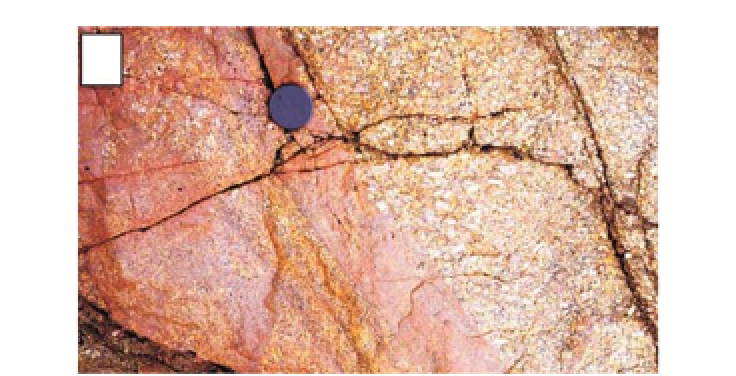Geology Reference
In-Depth Information
(d)
Figure 7.15
(continued)
in nature there is a race between the physical/mechanical processes at work and
the rate at which the system is cooling down - it is the relationship between
the timescales of these competing processes that allows (or not) for the richness
and diversity of structures preserved in igneous rocks. Unfortunately, there is no
common norm, meaning that each pluton must be assessed on its own merits.
7.5.2 Jointing
All plutonic rocks contain fairly regular sets of joints (Figure 7.17).
Primary
joints
are related to cooling of the intrusion. One kind of primary joint is referred
to as cross jointing which are mostly vertical and confined generally to pluton
margins where the rate of cooling is highest. Evidence that cross joints form
late in the crystallisation of plutonic magmas comes from the observation that
aplites and other vein structures are seen to follow them, implying that both
are coincidental and related to internal stress patterns in the cooling (and con-
tracting) magma. Cross joints are often affected by late stage hydrothermal fluid
interaction associated with emplacement, and may be therefore be mineralised
(see Chapter 10).
Secondary joints
form during subsequent phases of crustal-scale tectonic
deformation or uplift and unroofing. Sheet jointing is a good example: a
pervasive, generally contact parallel/horizontal joint mass, which classically
preferentially erodes giving rise to
tor
topography (Figure 7.18). At low
pressure-temperature conditions, tectonic processes might be responsible for
a wide or close-spaced fracture cleavage in plutonic rock. Jointing imparts a
distinctive fabric in igneous rocks that varies with intensity towards and away
from larger scale faults or shear zones. Together, these structures are referred
to as discontinuities and have an important role in governing the porosity


















